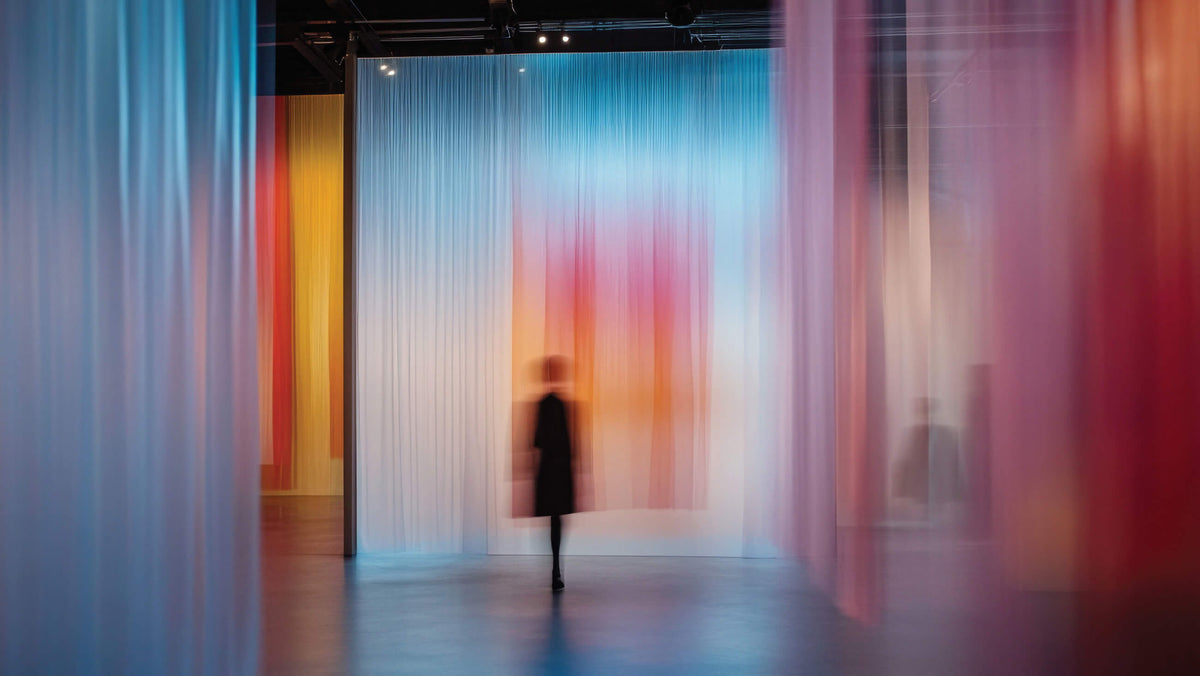A Sustainable Approach to the Future

In today’s interiors industry, most products follow a linear life cycle that begins with the extraction and processing of raw materials and ends in a landfill. This linear economy mindset has contributed significantly to the global impacts of climate change. However, a shift toward circularity offers a promising alternative, aiming to create products that support circular design and material flows as well as full lifetime unit economics.
Defining Circular Design
Circular design is an approach that considers environmental, social, and economic factors to support a circular economy. This design philosophy focuses on optimizing resource utilization and maintaining closed-loop material flows. For example, by designing products with their entire life cycle in mind, from sustainable material choices to responsible end-of-life practices, circular design aims to minimize waste and reduce the environmental footprint.

Sustainable Materials
The use of sustainable materials is crucial in circular design. This involves excluding harmful substances and prioritizing materials with attributes like recyclability and low embodied carbon (which produce less carbon dioxide than traditional materials). Sustainable materials help reduce the environmental impact of products and support healthier ecosystems.

Product Use Extension
Extending the useful life of products through repair, refurbishing, and upgradability is a core principle of circular design. By designing products that can be easily repaired or upgraded, the need for new resources is minimized, and products are kept in use for longer periods.

Responsible End of Life
At the end of a product’s useful life, its materials should be easily disassembled and repurposed. Designing for disassembly ensures that products can be recycled or upcycled, reducing the amount of waste sent to landfills
Impact of Circular Design
The adoption of circular design principles can have a significant impact on reducing waste and carbon emissions. The EPA reports, in the United States alone, an alarming 12 million tons of furniture are discarded into landfills annually, with 8.5 million tons being office furniture. This waste contributes to climate change, as interior renovations in office buildings alone can account for up to a quarter of their lifetime carbon emissions.
Trends
Several trends are driving the adoption of circular design, specifically in the furniture industry:
Long-Term Impacts: Real estate investors and businesses are increasingly seeking workspaces and interior products that are durable and adaptable. By choosing long-lasting products, the need for frequent replacements is reduced, leading to lower environmental impact.
Closing the Loop: The use of closed-loop materials, such as recycled textiles and plastics, is becoming more common. These materials maintain their quality through multiple cycles of reuse, supporting a circular economy.
Elevating:
Extended Life Programs: Companies are offering programs to assist consumers with repairs and ways to extend the use of their products. This approach helps keep products out of landfills and reduces overall consumption.
Carbon Regulations: Increasing regulations around carbon emissions are pushing companies to incorporate sustainability practices into their standard business operations. This includes reducing emissions through product and material choices.
Technology: Advances in technology, such as artificial intelligence, are helping accelerate changes in circular design. For example, AI is being used to optimize textile sorting for recycling and to create customized products that eliminate waste.
Circular Design in Practice
Implementing circular design principles requires a holistic approach that encompasses the entire life cycle of a product. This includes:
Design for Disassembly: Products should be designed so that they can be easily taken apart at the end of their life. This allows for the recovery and reuse of materials, reducing waste and conserving resources.
Modular Design: Creating products with interchangeable parts can extend their lifespan. When a component wears out or becomes outdated, it can be replaced without discarding the entire product.
Material Innovation: Exploring new materials that are sustainable and recyclable is essential. For example, biodegradable textiles and recycled plastics can reduce the environmental impact of products.
Consumer Engagement: Educating consumers about the benefits of circular design and encouraging them to participate in recycling and reuse programs can drive demand for sustainable products.
Circular design represents a transformative approach to product development, emphasizing sustainability and the responsible use of resources. By adopting circular design principles, the interiors industry can significantly reduce its environmental impact and contribute to a more sustainable future. This shift requires a collective effort from designers, manufacturers, and consumers to rethink the life cycle of products and embrace a circular economy.
Circular Design in Textiles

In the US alone, 55 million pounds of synthetic plastic textiles are sent to landfills every day. Only 1% of all synthetic and plastic-based textiles are eventually fully recycled. Some companies offer textiles that have been redesigned from thrown-away materials into revolutionary biodegradable textiles. Part of the CLEAN IMPACT TEXTILES™ Biodegradable line, Scapes is a proprietary, “leave-no-trace” solution that complements textile recycling. This game-changing technology establishes a new, bi-circular economy model for polyester fabric to flow through either a biological or technical cycle at the end of its useful life.
Upcycled Marine Plastic
Over the past 60 years, an estimated 12.7 million tons of plastic waste have been dumped into our oceans, negatively impacting marine ecosystems and more than 800 species of life. Through the SEAQUAL Initiative, marine debris is collected and transformed into upcycled marine plastic pellets, which are extruded into SEAQUAL Yarn. The fibers are then woven by textile partners to produce Oceanic, a beautiful upcycled-plastic polyester upholstery fabric.














Some things are too good to keep to yourself.